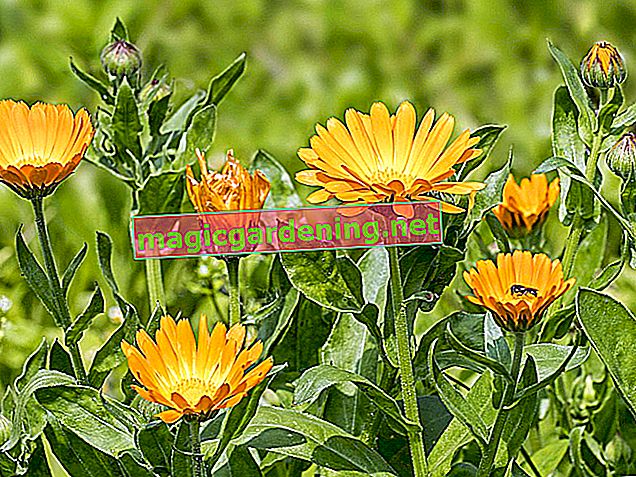
Precise instructions for propagating cuttings
In midsummer, the elderberry bush provides the ideal starting material for propagation, because the plant energy pulsates right into the shoot tips. Only choose healthy specimens as offshoots that are half lignified and have several leaf nodes. A leaf knot can usually be recognized by a thickening under the bark. The closer the distance between the leaf nodes, the more vital the cutting is.
- cut off one or more cuttings with a length of 10-15 centimeters
- defoliate the lower half of the shoot
- Halve the leaves of the upper half
- small pots fill with poor substrate, such as peat sand or standard soil
- Insert 1-2 cuttings each so that at least 1 knot can still be seen
also read
- Easily propagate elderberries with cuttings
- How can elderberries be propagated using cuttings?
- Propagate the hazelnut with cuttings
The potting soil is pressed down so that no cavities are formed. After pouring, it is an advantage to put a plastic bag over each pot. Long matches act as spacers. Ideally, a room greenhouse is available. In the warm, partially shaded location, the rooting proceeds quickly. The substrate must not dry out during this time. A first shoot signals the successful course of reproduction.
Maintain cuttings properly until they are planted out
If the starting shot for propagation is given early in summer, a young elder bush will have developed from the cutting by autumn. Provided with a strong root system, nothing speaks against planting this year.
If the young plant is not yet stable enough to overwinter outdoors, it will be regularly watered until spring. Replanting into larger pots may be necessary. Commercially available potted plant soil can be used as a substrate. In addition, a dose of organic liquid fertilizer from March nourishes your pupil enough that he can be planted from April / May.
This is how the propagation succeeds by sowing
In contrast to propagation by cuttings, breeding from seeds proves to be a little tricky. This is due to the fact that the seeds are cold germs and, as berry kernels, are additionally provided with a sprout inhibitor. A pretreatment is therefore required before the classic work steps of sowing are carried out:
- Soak the kernels, cleaned from the pulp, for 1 day in 2 percent potassium nitrate from the pharmacy
- alternatively let it soak for 48 hours in warm water
- fill a plastic bag with damp sand and the elderberry seeds
Following this cold stimulus, the seeds are taken out of the refrigerator and sown in peat sand. At a constant temperature of 20 degrees Celsius, germination now begins quickly.
Tips & Tricks
In order to promote the rooting of cuttings or seedlings, smart hobby gardeners spread a wafer-thin layer of compost on the bottom of the nursery pot. The little plants will work twice to get the coveted nutrients with their roots.
GTH








